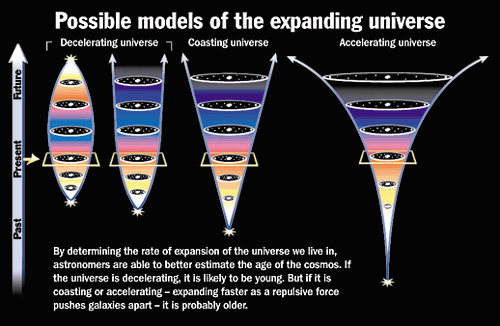Mike_Fontenot
Registered Senior Member
(Biff transmits at 12:00)
Lets say Biff's signal takes 3 min transit time.
(So you receive the message at 12:03)
You don't know the time on Venus at 12:00.
(You know it at 12:03)
(The stuff in red was added by mlf for clarification.)
That's correct. The "array of clocks" method will always tell the PIO what the distant person's (DP's) age tau1 was at some previous time T1 in the PIO's life, not at his current age. When the PIO gets the HF's message, the PIO is age T2 > T1. But that nevertheless DOES accomplish the job of telling the PIO how old the DP was when the PIO was T1 ... he doesn't know the correct answer for a while, but he DOES eventually know what it was.
But the PIO doesn't have to wait for that (correct) information: he can determine the answer IMMEDIATELY by just using the time dilation equation (TDE) for an inertial observer. The value of the array of clocks method is that it INSURES that that answer is completely real and MEANINGFUL to the PIO, because that answer can't be wrong unless the PIO's and the HF's clocks (and their ages) aren't actually synchronized. But those clocks were synchronized using only the assumption that the speed of light is 186,000 miles per second in that PIO's inertial frame. So if those clocks aren't synchronized, then the speed of light isn't 186,000 miles per second. And if that were the case, special relativity itself would be wrong.




